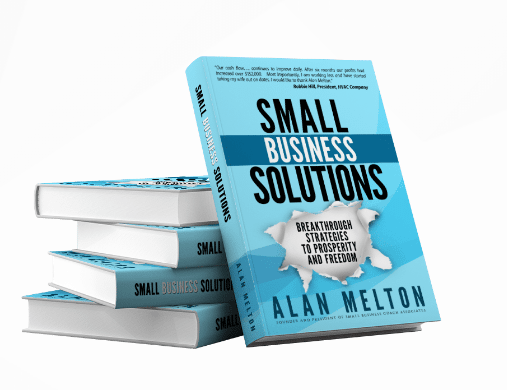VIEW BY TOPIC
- Finding Customers
- Business Systems
- Managing Employees
- Leadership
- Managing Money
Related Posts

Ready to Grow Your Business Fast?
Here’s How I Grew Five Businesses, and Eventually Sold One to a Fortune 500 Company.

Expert Tips for Choosing the Right Business Structure
You have the business plan ready, your product or service is ready, you have hand-picked the team, you’ve done your market and consumer research, and you are ready to put your money into the business and get the ball rolling. Before you take the next step, have you considered what legal status the business will have? Will it be registered with the chamber of commerce as a sole proprietorship, a partnership, or a company? It’s not just about registering a business and getting a tax number to file returns against. The kind of structure you choose will impact how you are taxed, what your liability is, and how you can operate your business. Choosing the right business structure is a crucial decision for the long-term well-being of the business.
Here are some of the main options that you can choose from.
Sole Proprietorship Business Structure

Sometimes keeping things simple is the best way to go and that is what the sole proprietorship model provides – simplicity. It’s the most common kind of business registration, it’s easy to set up, it’s cost-efficient, and it’s a tried and tested path for small businesses. As the name suggests, in the sole proprietorship the business is owned by one individual and that person is responsible for all the profits and losses in the business and is also the owner of all the assets and liabilities. In a way, you could say that the person is the business and the business is the person. There is no differentiating factor between the two entities in legal terms.
The main advantages to this structure are the ease of setting it up and the low cost associated with it. Secondly, it is also just as easy to close a sole proprietorship as it is to open one up. There is no complex process to legally close the business. This doesn’t mean that these businesses will remain small, and there are countless examples of multi-million and even multi-billion dollar companies that started as sole proprietorships.
Partnership
The next step up is to create a partnership. In this formation, two or more people share ownership of the company. The nature of the relationship between the partners can also vary. For instance, you can have a general partnership in which all partners have an equal stake in the company and can exert an equal amount of power. Alternatively, you can have a limited partnership in which one person has control over the company in terms of operations while the other partner contributes finances or any other resource to the business. In either kind of partnership, the profit is divided among the partners, and in some cases profits can be divided based on a ratio.
A partnership is a bit more expensive to register than a sole proprietorship but it is the most cost-effective solution if you have more than one business owner or investor. It’s also a good idea to have an attorney review your partnership deed, which is a small added cost. This kind of business is easy to register and the process is quite straightforward. Moreover, there is plenty of growth potential for this business as you can easily get financing for a partnership and you can include more partners as the business grows.
Plus, each partner can also get a loan thereby creating multiple revenue streams in the business. The taxation policy for this business structure is also quite favorable making this one of the most common choices for setting up a company in the UK and in other countries as well. In most cases, if you are registered as a partnership you will be exempt from personal income tax and you will only be paying tax in the form of company tax.
Limited Liability Company
The limited liability company (LLC) is a slightly more complicated business structure and is best suited to larger businesses that will involve a mix of partners, owners, and shareholders. The main advantage to this company structure is the limited liability that members have. This means that they are not personally liable for the operations of the company. In the case that the company incurs losses or needs to be liquidated the personal assets of the owners are protected.
The LLC structure gives owners the benefit of being protected from liability like large corporations and also allows them to show company earnings as their personal earning which saves them from tax implications. It is a solution that gives you the best of both worlds. It is more expensive to register this business and does require more paperwork but it is well worth it because of the benefits it provides.
Corporation Business Structure

Corporation structures are usually used by large companies and the main highlight of this structure is that the business itself is seen as an entity and is completely different from the owners. In this way, the company itself can be sued, can own assets, can have ownership of rights of assets like stocks, and do many things in the legal framework that an individual would be able to do. They have legal personhood. Within corporations, there are several other types such as C corporations and B corporations, closed and open corporations, and others.
Another big advantage to the corporation is its continuity. Since it stands separate from the owner, even if the owner dies, the company continues to exist. The other main advantage is the ability to raise a large amount of capital. Moreover, since the company is a separate entity, raising lots of capital from multiple sources does not burden the founders or owners with liability.
Most businesses will not start out as a corporation but as they scale up they will eventually change structure to become a corporation.
When finalizing the company structure that you want to go for, the key things to keep an eye out for are the liability factor, taxation concerns, and how easy or difficult it will be to gain financing. These things will vary a lot with the kind of registration you choose, and at different stages of the business, you will have different needs. Also, some structures such as the corporation will also have requirements that a sole proprietor may not be able to fill in its early stages. The good thing is that the structure of the company in terms of how it is registered can be changed in due time. If you find that you need to evolve to a more complex framework then you can always make the changes when you need to. This is a better way to grow as at that point in time you will have a clearer understanding of exactly what it is that you need.












